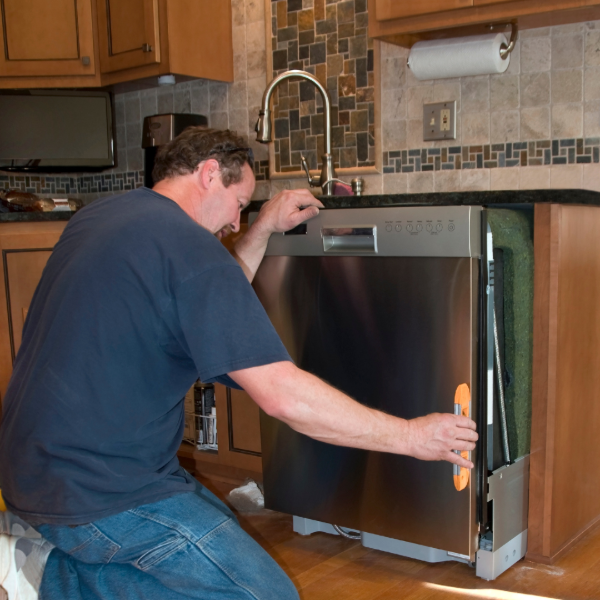Blog > How to Handle New Flooring Under Kitchen Appliances
How to Handle New Flooring Under Kitchen Appliances
Tuesday, October 14, 2025

Installing new kitchen flooring can completely transform your space — but one of the trickiest parts of the project is dealing with the heavy appliances that live there. From the refrigerator and dishwasher to the range, these large items require extra care and planning to avoid damaging your new floors or creating uneven surfaces.
Here’s what homeowners should know before laying new flooring under (or around) kitchen appliances:
Decide Whether to Install Flooring Under the Appliances
Not all flooring projects are created equal. Whether you install the floor beneath your appliances depends on the material, your kitchen layout, and future maintenance needs.
- Floating Floors (LVP, Laminate):
These should not be trapped under heavy appliances. Their natural expansion and contraction can be restricted by the appliance’s weight, leading to buckling. Instead, install the flooring up to the edges, leaving a small gap covered by trim or molding. - Tile or Glue-Down Flooring (Porcelain, Ceramic):
These can safely be installed beneath appliances since they’re permanently adhered to the subfloor. Doing so creates a seamless, level surface. - Solid or Engineered Hardwood:
Installing underneath appliances is fine — but ensure proper underlayment and sealing to prevent moisture damage from leaks or spills.
Plan for Height Differences
Adding new flooring can raise the kitchen floor height by up to an inch or more. This can cause issues like:
- Tight or misaligned dishwasher openings
- Gaps around cabinets or refrigerator cavities
- Uneven transitions between rooms
Before installation, measure the appliance openings and adjust cabinet toe-kicks, trim, or counter height if necessary. Some appliances, like dishwashers, may need to be temporarily removed or adjusted to fit properly once the flooring is in place.
Seal and Protect High-Moisture Zones
Areas around dishwashers, sinks, and refrigerators with ice makers are especially vulnerable to leaks.
- Use waterproof underlayment or silicone sealing near vulnerable edges.
- Consider a drip pan or moisture barrier under your refrigerator and dishwasher for added peace of mind.
When handled correctly, new flooring under your kitchen appliances adds polish and practicality to one of your home’s busiest spaces. A little planning — and the right materials — go a long way toward preventing costly mistakes down the road. For additional questions and best practices on how to handle flooring under heavy kitchen appliances, contact Jason’s Carpet and Tile today at 954-231-4487.
